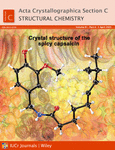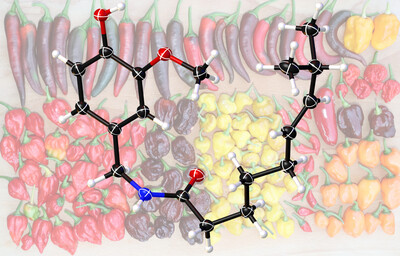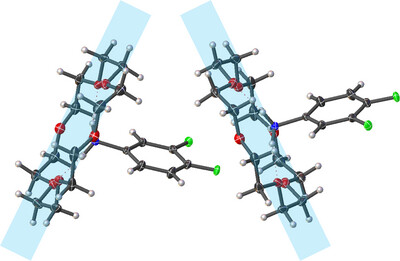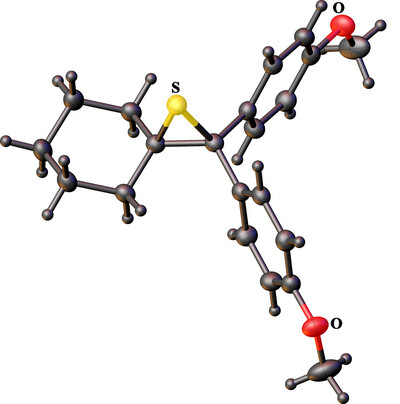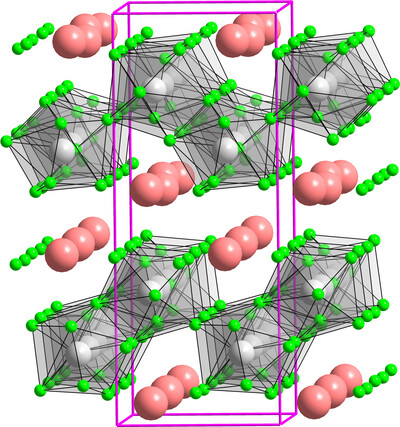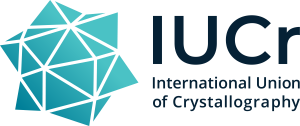Journal list menu
Export Citations
Download PDFs
research papers
Racemic mimics. Part 1. Nickel coordination compounds
- Pages: 181-187
- First Published: 06 March 2025

There are very few examples of crystallographically well-documented racemic mimics. Therefore, this interesting class of crystalline molecules, potentially having useful biological uses, is today one of those scientific orphans largely ignored in the crystallographic realm. Some suggestions are provided for searching for potential cases of such a crystallization mode using information already in print.
Single-crystal structure of the spicy capsaicin
- Pages: 188-192
- First Published: 07 March 2025
Mixed cocrystal approach influences the yield for a [2+2] cycloaddition reaction within a halogen-bonded organic solid
- Pages: 193-197
- First Published: 07 March 2025
![Mixed cocrystal approach influences the yield for a [2+2] cycloaddition reaction within a halogen-bonded organic solid](/cms/asset/a2f87fdd-cd7e-47de-b6d1-3b9d210b3cdf/ayc2jx3092-fig-0001-m.jpg)
The ability to control the yield for a [2+2] cycloaddition photoreaction by using a mixed cocrystal approach is reported. The two isosteric halogen-bond donors allow for the formation of the cocrystal solid solution and as a result influences the extent of the photoreaction based upon their initial molar ratios.
7-(4-Chlorophenyl)-1-hydroxy-5-methylpyrido[3,4-d]pyridazin-4(3H)-one: synthesis, solvatomorphism, in vitro anti-inflammatory and cytotoxic activity studies and in silico analysis
- Pages: 198-211
- First Published: 11 March 2025
![7-(4-Chlorophenyl)-1-hydroxy-5-methylpyrido[3,4-d]pyridazin-4(3H)-one: synthesis, solvatomorphism, in vitro anti-inflammatory and cytotoxic activity studies and in silico analysis](/cms/asset/f6b826a7-29f2-46ee-86eb-cac9b3015ad2/ayc2oj3026-fig-0001-m.jpg)
The biological activity of a newly synthesized pyrido[3,4-d]pyridazinone was investigated in terms of cytotoxic (on the normal cell lines L929 and RPTEC, as well as the cancer cell lines A172, AGS, CACO-2 and HepG2) and anti-inflammatory (using colorimetric assay for inhibition of COX-1 and COX-2) properties.
Structural and supramolecular insights into crystalline multicomponent systems of 2,4-diamino-6-phenyl-1,3,5-triazine with various carboxylic acids
- Pages: 212-223
- First Published: 12 March 2025
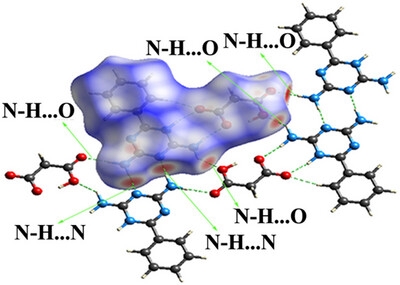
The supramolecular interactions and Hirshfeld surfaces of three multicomponent systems, namely, 2,4-diamino-6-phenyl-1,3,5-triazine–nicotinic acid, 2,4-diamino-6-phenyl-1,3,5-triazin-1-ium hydrogen malonate and 2,4-diamino-6-phenyl-1,3,5-triazin-1-ium hydrogen (+)-dibenzoyl-d-tartarate have been investigated.
Halogen-substituted benzylamine crown ether inclusion complexes
- Pages: 224-229
- First Published: 13 March 2025
8-Ethynyl-2′-deoxyisoguanosine with two tautomeric forms in the unit cell: crystal structure, packing and Hirshfeld surface analysis
- Pages: 230-237
- First Published: 13 March 2025
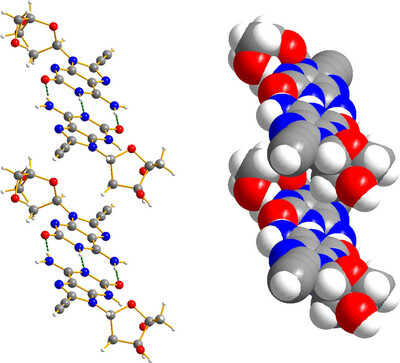
8-Ethynyl-2′-deoxyisoguanosine exists as an organized mixture of the N1-H and N3-H tautomers in the solid state. The nucleoside is in a syn conformation, which is stabilized by hydrogen bonds between the heterocycle and the sugar residue. A tridentate purine–purine base pair in the crystal packing is enabled by alteration of the donor–acceptor pattern of the nucleobase due to tautomerism.
Transformations of thiocarbonyls into alkenes via Barton–Kellogg olefination
- Pages: 238-245
- First Published: 14 March 2025




